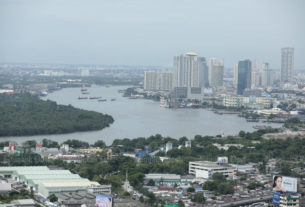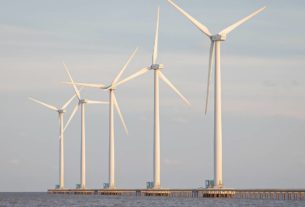Thailand’s PTT is looking at expediting the expansion of its LNG receiving terminal by 1-2 years to cope with the country’s faster-than-expected growth in natural gas demand.
The Thai state-controlled energy concern sees the need to add a second 5 million mt/year unit to its Rayong facility, about 220 km southeast of Bangkok, earlier than anticipated because of additional gas demand largely spurred by new gas-fired power plants, a senior PTT executive said last week.
These new gas-fired generators would need to be put in place as possible replacement to several planned coal-fired and nuclear power stations in Thailand, which have been facing an uncertain future due to relentless opposition from communities and environmentalists.
Thailand’s power supply master plan, known as the Power Development Plan, or PDP, is due for another revision this year with the development of coal-fired power stations and nuclear energy — the kingdom’s first but likely to be delayed further.
The PTT executive said the on-stream date of the second LNG unit could be brought forward to 2014-2015, from 2016. That would be confirmed by a feasibility study being undertaken by PTT and due for completion by the middle of this year with construction starting next year.
Estimated to cost $400 million, the second unit will be an extension of the first phase of PTT’s LNG terminal in Map Ta Phut, Rayong, which was officially opened in September last year.
Built at a cost of $900 million, PTT’s facility, the first of its kind in Southeast Asia, basically includes two LNG storage tanks with a capacity of 160,000 cubic meters each, and a port capable of accommodating LNG vessel capacity of between 125,000 and 264,000 cubic meters.
The second phase of the project will comprise of one LNG storage tank and an expanded port facility.
Thailand’s gas demand has been rising at 6-7% annually, prompting PTT to secure more supplies both from home and neighboring countries in terms of piped gas and LNG. The expansion of PTT’s LNG facility means LNG will play a greater role in the national fuel supply mix.
Though LNG’s contribution to Thailand’s gas supply profile stands at less than 5%, or 130,000-140,000 Mcf/d, planners at PTT see LNG accounting for 30% of total gas supply in the next decade.
With the second-phase of the LNG terminal completed, Thailand would import 10 million mt/year of LNG, or an equivalent of 1.4 Bcf/d in terms of raw natural gas.
The Energy Policy & Planning Office said in its outlook forecast issued last week that Thailand’s natural gas demand in 2012 would leap 7.4% from last year level to 874,000 barrels of oil equivalent a day, driven largely by requirements for power generation and industrial and automotive uses.
Thailand’s previous government, the Abhisit Vejjajiva administration, in April last year resolved to put off the country’s first nuclear power development program by three years, with the first of its five proposed 1,000-MW plants expected to start commissioning in 2023.
That decision, at the same time, was prompted by growing safety concerns and opposition arising from Japan’s nuclear crisis earlier last year, as well as the International Atomic Energy Agency’s view that the kingdom was not ready for such an undertaking.
Thai energy planners have advocated Thailand continue with the target as outlined in PDP 2010, that the country reduces the gas contribution to the total power fuel mix to 40% from 70% by diversification with the inclusion of coal and nuclear energy.
Source: http://www.platts.com/RSSFeedDetailedNews/RSSFeed/NaturalGas/7031937


